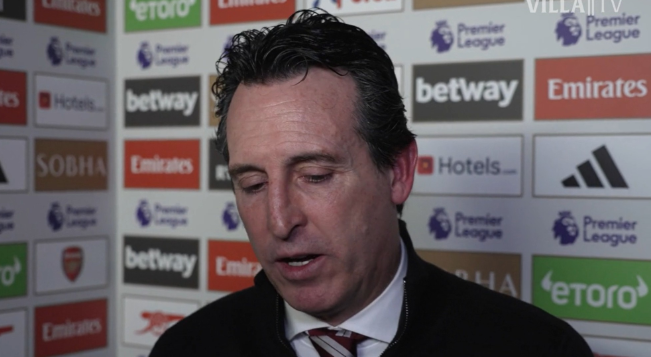Group H Matchday 1 of the 2022 Qatar World Cup group stage kicked off with South Korea taking on Uruguay. Although both teams did not have a single shot on goal in the whole match, there was no coldness in their offense. In this article, we will take readers - whether you are a novice or a seasoned fan - through the TV cameras and the tactical viewpoints of the game to see how the tactics of the two teams worked in this attacking battle.
The author's fan page has finally been created on Instagram ~ (sprinkle flowers) ~ The main content will be some of the observations of the game,
transfer to another club (professional sports)
The message, and the team the author supports (
Tottenham Hotspur (city in France)
Dortmund) some of the highlights, to share and exchange with your readers, but also press tracking more attention Oh ~!
FIFA World Rankings:
South Korea
Uruguay
Last five battles form:
South Korea
Uruguay
Last 4 games vs.
Uruguay's 3 wins and 1 loss
dominance
The two teams of the World Cup 26-man list and the list of players selected for the qualifying rounds, basically there is not much change, in the current period of only 10 days of training days, can be expected to not have to go through too much of a break-in period, so the previous qualifying rounds of the personnel and tactics of the changes, with a very large reference.
Injury part, South Korea played in
England Premier Soccer League
Wolves striker Wong Hee-Chan will not play as he is a slight injury doubt in training, while for Uruguay, Barcelona center back Ronald Araujo has been out of action since September.
European crown
Suffered a serious injury in the group stage, his availability for this match is still in doubt.
In terms of attacking organization, Uruguay's dynamic formation did not match the pre-match 4-3-3 at all. Instead, it was a three-man center back formation with Godin, Giminez, and midfielder Bentancur taking turns to drop back. This arrangement is actually very reasonable, 36-year-old Godin has already passed his peak, his speed, confrontation ability, and the coverage of the backfield defense no longer meets the requirements of the four backs system. In case the ball is lost in the backfield, it will be very dangerous to face the defensive counter-attack of the Korean wingers with high speed on both sides of the field. The three center backs system can at least protect the number of players in the defense.
In the system of three center backs, the two wingbacks will be significantly pulled forward on the pitch, which has been mentioned very many times in my previous articles, and the Netherlands also used such a system to the fullest extent in the current World Cup.
As for the arrangement of the three midfielders, apart from Bentancur's long time to form a trio with the two central defenders, Vecino and Valverde will also drop back from the midfield to assist in the organization, so as to increase the numerical superiority of the backfield. Other details will be discussed in the next subsection, so let's stop here.
In the first half, Uruguay clearly wanted to take advantage of their size advantage by having Darwin Nunez on the left side of the pitch, and Valverde and Vecino in the center of the pitch to form a triple-arrow with Luis Suraez in the center of the field, waiting for the passes from the two sides of the field to make a grab and go inside the penalty box or in the air. This can also be seen in the statistics website, where Uruguay attacked from both sides of the field, with a combined percentage of 75% from both sides of the field.
Compared to Uruguay's more dramatic changes in formation and play, South Korea's 4-2-3-1 attack was slightly more standardized. The wingers were narrowed down to allow space for the wingbacks to run forward, while the central midfielders took turns dropping back to help organize and roam around the center of the field.
Being one of the few Asian teams that emphasize passing, South Korea was not affected by Uruguay's pressure. With a double midfielder constantly on the move, even in the half-space, players were constantly forming triangles with each other, and there was always an option to pass the ball.
Benefiting from the triangle formation between players, South Korea were able to create an overload in the half-space, and seldom saw South Korea lose the ball due to pressure during the match. And if Uruguay focuses too much on pressing the sides, South Korea can also move the ball quickly and easily to the weak side of the ballless side by simply passing the ball with two or three feet under this triangle position. The only drawback is that apart from Son, the Taejik Tigers lack side players who can deliver stable quality crosses to pose an immediate threat.
In terms of dynamic formations for the defense, both teams have unanimously responded with a 4-4-2. Uruguay's setup starts with the front duo of Suarez and midfielder Vecino, flanked on the left and right by Darwin Nunez and
Manchester United Football Club
Junior Pellistri is in charge of the defense in a setup that was a bit of a surprise to this writer. First of all, Nunez came from center in the
Liverpool (England)
While he was occasionally placed at left tackle during this period, both offensively and defensively he was not as good as he was at
the national team
The role is a far cry, and there has to be a big question mark over defensive awareness and aggressiveness.






























